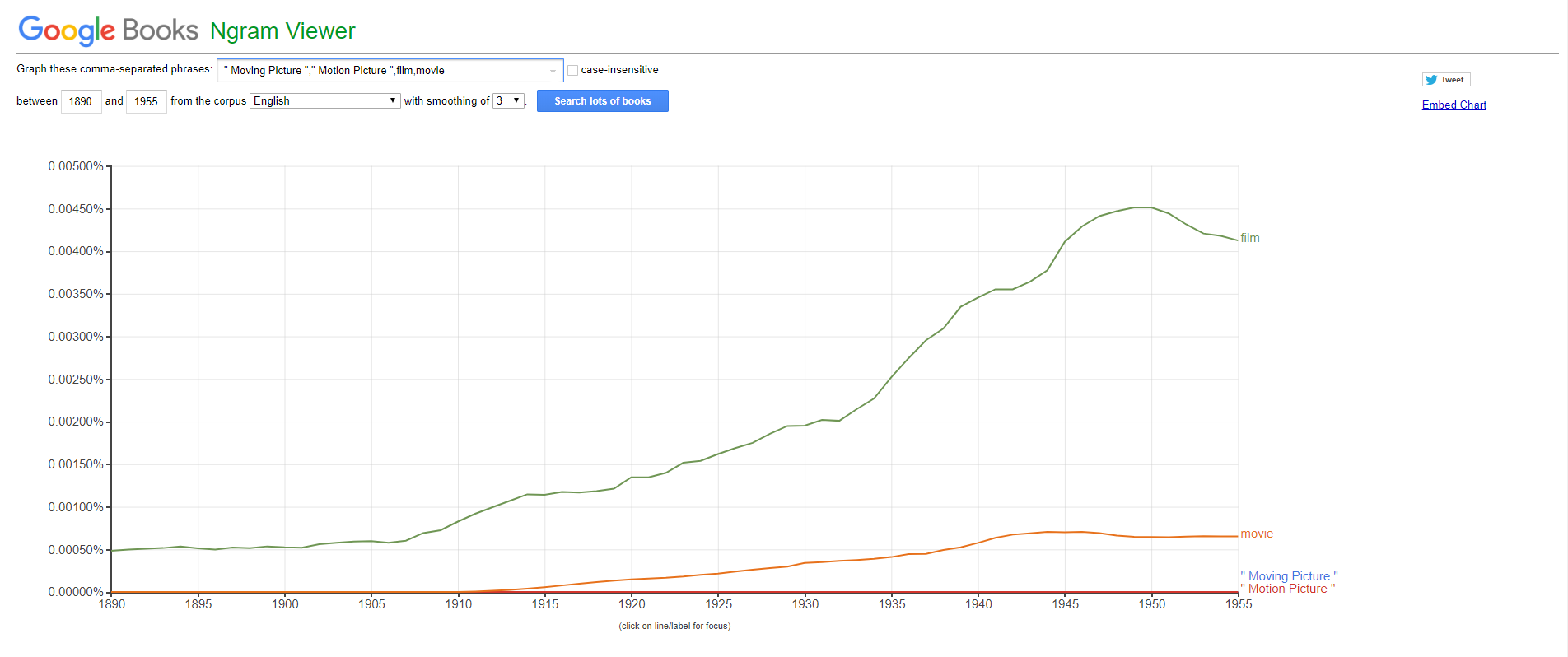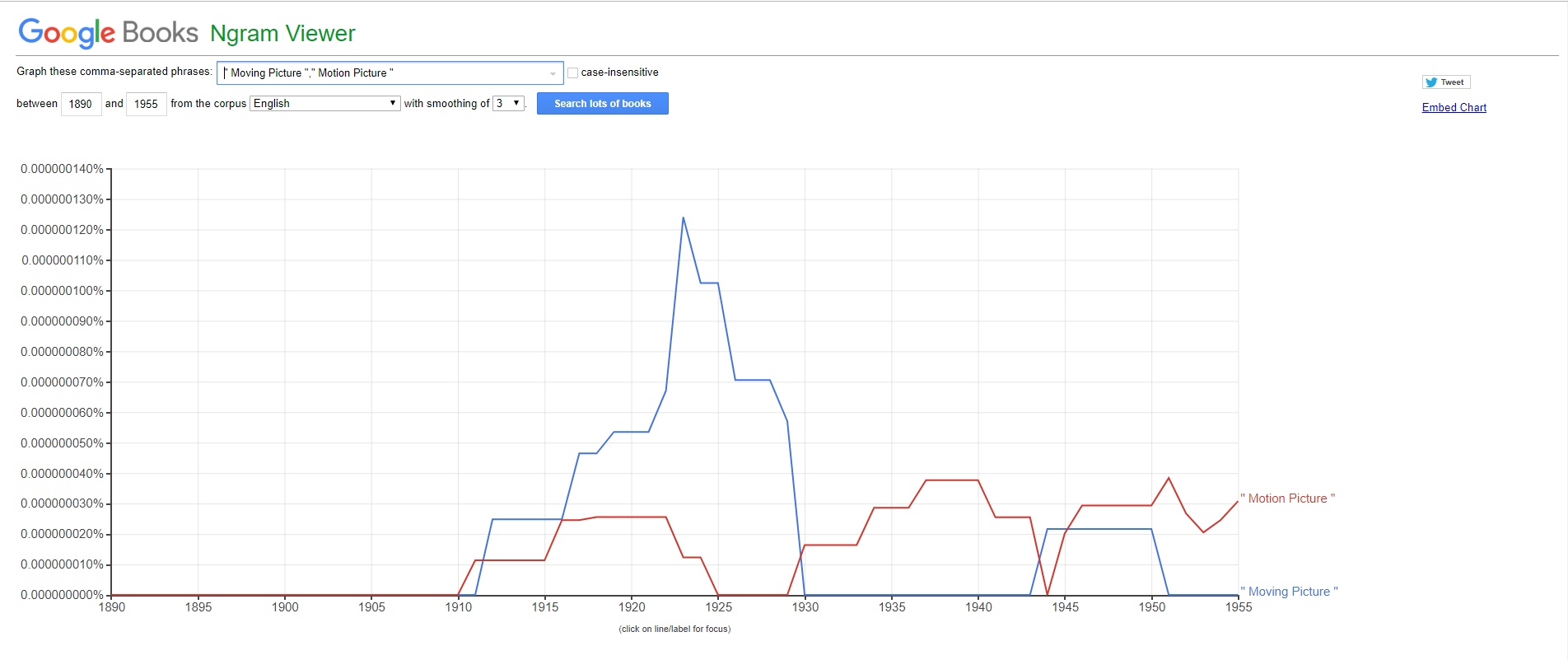Nomenclature
When conducting historical research, it is important to know the nomenclature of the time period. When researching film history, one encounters the problem of various terms being used to identify the new media. The most commonly encountered terms are: film, movie, moving picture, and motion picture. This section uses the Google Ngram tool and Voyant to attempt to provide some guidance for which terms were being used in the early twentieth century and in Ohio particularly. The Google Ngram tool searches the term throughout the sizable collection of Google Books, and the results of that search are immediately below. The second search utilizes plain text files of several newspapers from Ohio 1912-1917 in the Voyant Trends tool, to see if any clear term rises above the rest for the early years of the Ohio Board of Film Censorship.
Ngram: All Terms, 1890-1955

Figure 3: Ngram: All Terms, 1890-1955
While at first glance the results of this Ngram may seem to be definitive, there are some points of speculation to note. First, the chart shows the term "film" being popular prior to 1890 and thus prior to the new media that we are researching. The use "film" in this case is most likely referring "film" as part of still photography. Secondly, it is surprising to find that the term "movie" was utilized at such an early period, since it is often, anecdotally, understood that the term "movie" developed as an abbreviation of the term "moving picture." Apparently that abbreviation developed quite early. Lastly, this Ngram shows no results, relatively, for the terms "moving picture" and "motion picture," one can hazard an educated guess that the result of "film" set too high a bar for the other results to appear. As will be seen in the next Ngram and the Newspapers, the terms were being used frequently.
Ngram: "Moving" and "Motion" Picture, 1890-1955

Figure 4: Ngram: "Moving" and "Motion" Picture, 1890-1955
This Ngram more accurately represents what one would expect to see. The Nickelodeons and storefront theaters began gaining traction in the first decade of the twentieth century, but film as a theatrical event began to develop around 1915, right where the red and blue lines first spike up. The dramatic spike of the phrase "moving picture" in twenties is surprising given that in the film industry there was the journal Motion Picture Herald and in 1922 the Hollywood self-censorship group the Motion Pictures Producers and Distributors of America (MPPDA). Based on the information above one can conclude that of the two terms above, the term "moving picture" was prevalent until the development of sound films, at which point the term "motion picture" became widely used.
Trends: Terms in Newspapers
Figure 5: Trends: Word Used for Film
This Voyant trends analysis shows the use of the terms in Ohio newspapers over a select period of time, this corpus is of newspapers talking specifically about film censorship. It seems that "film" was commonly used throughout all the articles (no surprise since the Board was titled The Ohio Board of Film Censorship), but the use of "picture" (in either moving or motion) was more popular. The terms "moving" and "motion" can not be compared using the trends tool because the term "moving" was often used in requested eliminations, and thus results would be skewed.
Conclusion
Based on the combination of the Google Ngram analysis and the select newspaper search it can be concluded that no term clearly rises above the rest. While "film" appears to be most commonly used term, there is the possibility that many of the results are skewed due to the term being used for photography and the physical production of a motion picture. Additionally, the use of the phrase "motion picture" in Hollywood organization indicates that other terms should be not quickly dismissed when doing historical research. From this research it is clear that all terms must be utilized when doing historical research into the history of films/movies/motion or moving pictures.